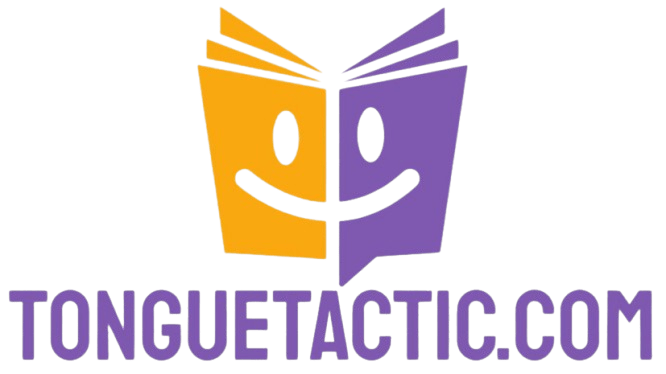how to choose the right language learning app
Choosing the right language learning app can feel like navigating a maze. With so many options available today, it’s easy to feel overwhelmed.
Whether you’re just starting or refining your skills, it’s vital to evaluate key factors. These include language offerings, teaching methods, pricing, and subscription plans.
This guide highlights essential features to consider, such as interactive exercises and progress tracking. It also shares user reviews and tips for trial versions.
With this information, you’ll be ready to make an informed choice and enhance your language-learning journey!
Contents
- Key Takeaways:
- Factors to Consider When Choosing a Language Learning App
- Features to Look for in a Language Learning App
- Reviews and Recommendations
- Try Before You Buy
- Additional Resources for Language Learning
- Frequently Asked Questions
- What factors should I consider when choosing a language learning app?
- How can I determine which language learning method is best for me?
- Are there any free language learning apps available?
- Can I learn multiple languages on one app?
- Is it better to choose an app that offers live classes or self-paced learning?
- What Should I Look for in User Reviews When Choosing a Language Learning App?
Key Takeaways:

Consider language availability, teaching methods, and cost when choosing an app.
Look for interactive exercises, speech recognition, and progress tracking.
Read reviews and try free trials before committing.
Factors to Consider When Choosing a Language Learning App
When searching for the perfect language learning app, think about what matters most to you. To enhance your experience, consider how to find the best language learning communities that align with your unique learning goals, as they should guide your choice.
Consider aspects like language options, teaching methods, and cost. Some apps, like Lingvist and Rosetta Stone, offer a wide selection of languages, while others focus on immersive experiences. To explore more options, check out the top 10 language learning apps to try in 2024.
The app’s design and interactive features can greatly enhance your journey. This is especially important if you prefer engaging visual content.
Language Availability
Language availability is critical when selecting an app. Not all platforms offer the same languages, like Spanish or French.
This factor becomes even more important based on your personal goals whether for travel, career, or community connections.
Popular platforms such as Babbel and Duolingo provide many languages to meet diverse needs. Aligning language options with your learning objectives is essential.
Interacting with native speakers sharpens your skills and enriches your learning experience. It makes your language journey meaningful and impactful.
Teaching Methodology
The teaching method of a language app can shape your overall experience. It includes components like grammar, vocabulary, and audio lessons tailored for different learning styles.
These platforms often feature interactive exercises that engage you deeply. Many adapt the curriculum based on your progress and strengths.
For instance, Pimsleur focuses on auditory learning using a method that helps you remember vocabulary. Fluent uses storytelling and real-life scenarios to help you practice your skills.
This variety of teaching methods not only makes learning effective but also caters to diverse preferences, enhancing your outcomes.
Cost and Subscription Options
Understanding costs and subscription options is essential. This can significantly influence your commitment and study goals.
Evaluate how different pricing models fit your budget and lifestyle. Free trials let you explore features without pressure, while monthly plans offer flexibility.
Comparing platforms like Memrise and Busuu shows that Memrise is often more budget-friendly, whereas Busuu offers a richer learning experience for dedicated learners.
By understanding these factors, you can choose an app that aligns with both your budget and educational aspirations.
Features to Look for in a Language Learning App

When evaluating language learning apps, look for exciting features that can significantly enhance your experience.
Look for:
- Interactive exercises that engage you actively,
- Progress tracking to monitor your advancement,
- Opportunities for community interaction with real locals.
These elements can transform your language learning journey into a more enriching and immersive experience.
Interactive Exercises and Activities
Interactive exercises and activities are essential elements of your language learning app. They elevate the experience through gamified learning and reinforce new vocabulary with engaging content and digital flashcards.
These exercises cater to various learning styles, ensuring that visual, auditory, and kinesthetic learners can all find their groove.
With formats such as multiple-choice quizzes, fill-in-the-blank tasks, and real-life scenario simulations, you can choose what resonates with you most, significantly boosting your engagement.
The use of spaced repetition, a method that helps you remember words by revisiting them at set intervals, promotes long-term retention. This allows you to revisit key vocabulary and grammar concepts at just the right moments.
This dynamic approach enhances your confidence and helps you internalize language skills more effectively, making your learning journey both enjoyable and productive.
Speech Recognition and Pronunciation Practice
Effective language learning apps bring the power of speech recognition and pronunciation practice right to your fingertips. This allows you to fine-tune your pronunciation skills through immersive audio lessons and interactive feedback.
By harnessing advanced technology, these platforms create an engaging learning environment. The integration of audio features aids in accurate word articulation and helps you grasp the subtleties of tone and accent.
Take apps like Lirica, for example. They focus on these audio elements, enabling you to practice your pronunciation while enjoying songs and captivating content.
As you refine your speech with real-time feedback, you’ll find your confidence blossoming. This transforms your learning journey into a more effective and enjoyable experience overall.
Progress Tracking and Personalization
Robust progress tracking and personalized approaches are vital in language learning apps. They allow you to monitor your growth and adapt your methods to suit your unique needs.
This dynamic process keeps you engaged and fosters a sense of accomplishment that fuels your drive to achieve fluency.
When you can visually see your skills improving over time, it delivers a powerful motivational boost.
Many apps utilize smart systems that cater to your individual learning style and preferences. This ensures that exercises, vocabulary, and pronunciation practices align with your personal goals.
This tailored experience helps you stay focused, making the journey of mastering a new language not only more enjoyable but also more effective.
Reviews and Recommendations
Reviews and recommendations from both users and experts are vital for making the best choice in language learning apps today! They provide invaluable insights into the effectiveness of the app and the overall user experience, helping you make informed choices about your language learning journey.
Feedback from Users and Experts

User feedback and expert opinions serve as invaluable resources when you are assessing language learning apps. They offer insights into the effectiveness of various features and the overall process of language acquisition.
Diving into trends in user reviews helps identify which functionalities resonate well with learners and which ones may not deliver practical language skills.
Expert evaluations often spotlight teaching methodologies that boost user engagement and minimize the frustration that can accompany the journey of learning a new language.
Together, these perspectives provide a comprehensive understanding of both user satisfaction and the quality of instruction.
Real-world experiences shared by users illuminate how effectively these applications translate into actual conversational ability. This equips you with the knowledge necessary to make informed choices.
Try Before You Buy
Exploring language learning apps before diving into a subscription can be incredibly advantageous. Free trials and demo versions provide a chance to experience the app’s features firsthand. This ensures it aligns with your learning style and goals.
Free Trials and Demo Versions
During the trial, you can try interactive exercises and audio lessons, allowing you to see how the app accommodates different learning styles. You’ll have the chance to assess the interface usability, ensuring that navigation is both intuitive and enjoyable.
Engaging directly with the app showcases its strengths and reveals any potential drawbacks, enabling you to make well-informed decisions. By reflecting on your personal experiences during the trial, you can better determine whether the app meets your educational needs and preferences, leading to a more fulfilling language acquisition journey.
Additional Resources for Language Learning
Supplemental materials and resources play a crucial role in enhancing your language learning journey. They help bridge the gap between using an app and applying your newfound skills in real-life situations.
By incorporating cultural immersion and engaging with the community, you enrich your understanding and fluency in the language.
Supplemental Materials and Resources
Supplemental materials, like books and podcasts, are essential to your language learning journey. They provide cultural immersion and a variety of learning methodologies.
These resources give you authentic exposure to the language in different contexts, helping you grasp nuances and regional variations that apps often overlook.
For example, audiobooks can significantly enhance your listening skills by showcasing natural speech patterns, while novels offer deeper insights into cultural references and idiomatic expressions.
You can also enhance your practice with video content or engage in online forums, allowing for real-time conversations with native speakers.
Together, these tools enrich your learning experience and fill in the gaps that traditional apps might leave behind, creating a more comprehensive approach to language acquisition.
Frequently Asked Questions
What factors should I consider when choosing a language learning app?
When choosing a language learning app, consider the app’s teaching method, the languages it offers, the user interface, and any additional features such as progress tracking or live classes.
How can I determine which language learning method is best for me?
The best way to find out which language learning method suits you is to try different apps and see which one feels most comfortable and effective for your learning style. Some apps use a more traditional approach, while others incorporate interactive games and activities.
Are there any free language learning apps available?
Yes, many free language learning apps are available. However, be aware that these may have limited features or offer in-app purchases for additional content. Research and read reviews before downloading to ensure the app is reputable and effective.
Can I learn multiple languages on one app?
Some apps offer multiple languages, while others focus on just one. If you’re interested in learning more than one language, choose an app that provides a variety of options.
Is it better to choose an app that offers live classes or self-paced learning?
This depends on your personal preference and learning style. Live classes provide real-time interaction and feedback, while self-paced learning allows you to progress at your own speed. Some apps offer a combination of both, so choose based on your individual needs.
Start your trial today and find the app that’s right for you!
What Should I Look for in User Reviews When Choosing a Language Learning App?
When reading user reviews, focus on how well the app works, how easy it is to use, and the quality of customer service.
Additionally, look for feedback from users with similar language goals to understand how the app might fit your needs.







